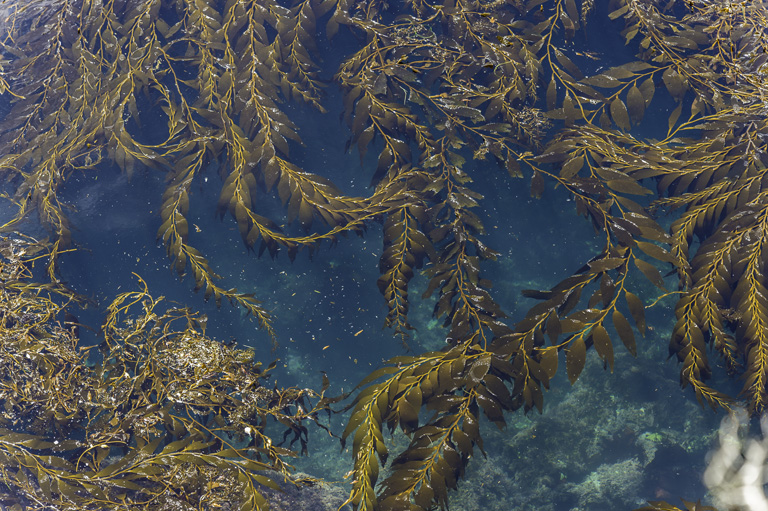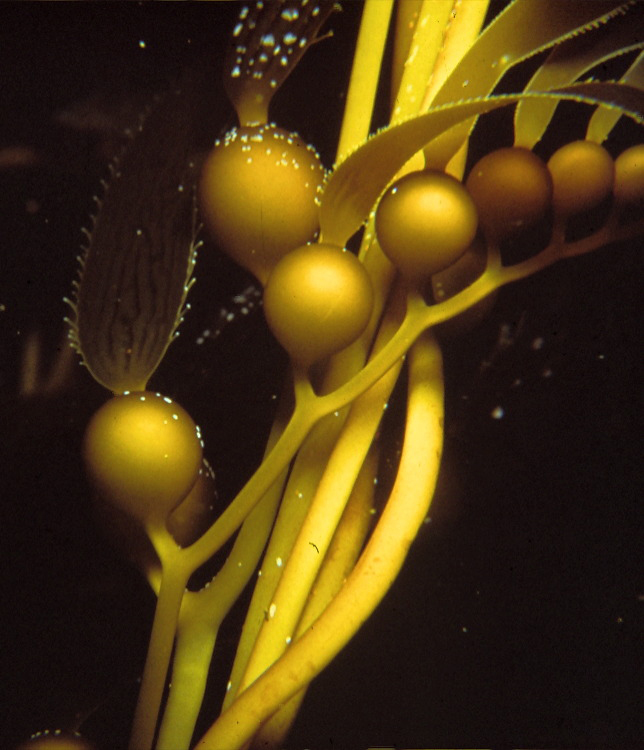
Kelp is a type of seaweed that forms tall, tree-like canopies from the seafloor to the ocean’s surface. Dense stands of kelp are called kelp forests.
FAMILY
Laminariaceae, a family of brown marine algae
RANGE
Primarily the Pacific Coast
Where does kelp grow?
Most of the world’s kelp forests are found on the Pacific Coast, where common species include giant kelp (Macrocystis pyrifera) and bull kelp (Nereocystis leutkeana). Kelp require specific growing conditions, including:
- Cool, nutrient-rich water: kelp is sensitive to changes in water temperature
- Clear, coastal waters: enough light is needed for photosynthesis
- Rocky seafloor: instead of roots, kelp uses holdfasts to anchor itself to the seafloor
Kelp Forest Ecology
Giant kelp can grow up to 18 inches a day and live up to 7 years long. Natural events, such as strong storms and changes in water temperature, can influence their growth and lifespan. Changes in kelp forests can impact a great diversity of other plants and animals—including sea otters, seals, whales, and many species of birds and fish—that rely on kelp for food and shelter.
Threats
Though some changes are naturally occurring, certain human activities (e.g. coastal development, pollution, over-fishing) can have negative effects on kelp forests. It is important to make sure that important predators in the kelp community are not disturbed: sea otters and spiny lobsters feed on purple sea urchins, which in turn feed on kelp. Without these predators, the sea urchins become too abundant, and can remove large amounts of kelp habitat.
About this Map
To create this map, researchers used satellite data to detect kelp canopies off the coast of Southern California. The yellow areas show all of the regions where kelp was detected between 1984 and 2017. We also shared what kelp forests looked like in 2017: light green areas had kelp for at least one season of 2017, while dark green areas had a stable kelp canopy for the entire year. The size of a kelp forest can increase or decrease from season to season, depending on natural or human causes. However, researchers can also distinguish long-term changes in regional kelp cover by examining a longer time series of data.


Acknowledgements: We thank Kyle Cavanaugh (Department of Geography, UCLA) for sharing this kelp forest data.